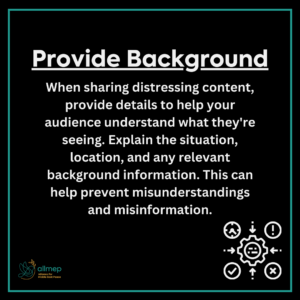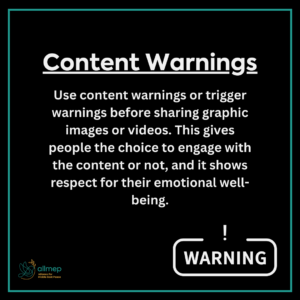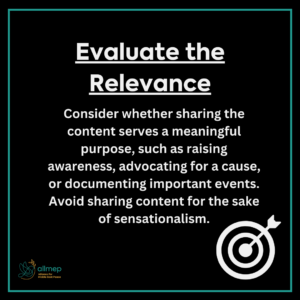Sharing Content During Active Conflict
Many of us now live larger and larger portions of our lives online, in a way that would have been scarcely believable in the past. The Second Intifada saw a devastating loss of civilian life, at levels that still traumatize both Israeli and Palestinian society. Yet we have already seen more Israelis and Palestinians lose their lives in less than two weeks, than were killed during the whole five years of the Second Intifada. And what’s more, this nightmare has unfolded in an era of camera phones, social media saturation, and deep polarization. Online, the level of dehumanization and hatred has been profound. The influx of media, news, and information has been growing every day, with shocking images, misinformation, and deeply disturbing stories rampant. These stories and the human loss at their center have the capacity to mobilize populations, for both good or for bad. When recklessly shared, they have the capacity to traumatize further and do increased harm.
Here are some guidelines to consider sharing content during active conflict:

💭 Consider the Audience: Think about your audience and their sensitivities. Avoid sharing graphic content with individuals who may be triggered or distressed by it, such as children, those with PTSD, or people who have experienced trauma.

🔍 Verify the Source and Authenticity: Ensure that the content is from a credible source, and verify its authenticity to prevent spreading misinformation or propaganda. Use reputable news outlets, verified social media accounts, or fact-checking websites to confirm the information.

📚 Provide Background: When sharing distressing content, provide details to help your audience understand what they’re seeing. Explain the situation, location, and any relevant background information. This can help prevent misunderstandings and misinformation.

⚠️ Content Warnings: Use content warnings or trigger warnings before sharing graphic images or videos. This gives people the choice to engage with the content or not, and it shows respect for their emotional well-being.

🚫 Respect Privacy and Dignity: Avoid sharing content that invades the privacy of individuals or portrays them in a demeaning or dehumanizing way. Respect the dignity of those affected by the conflict.

🤔 Evaluate the Relevance: Consider whether sharing the content serves a meaningful purpose, such as raising awareness, advocating for a cause, or documenting important events. Avoid sharing content for the sake of sensationalism.

